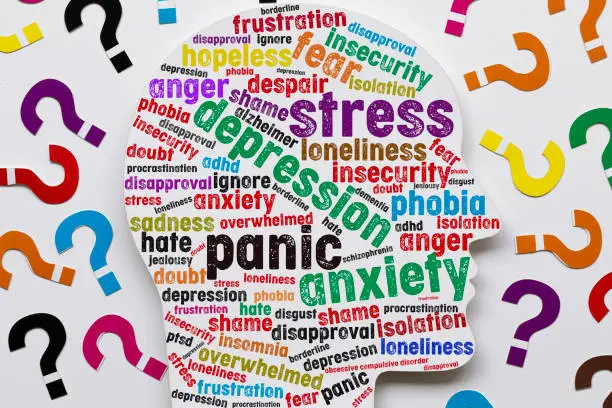Anxiety is often framed as a problem to be solved, a storm to be weathered, or an intruder to be expelled. But what if, instead of fighting against it, we began to ask: What role does anxiety actually play in my life? Like a character in a complex story, anxiety doesn’t always show up in the same costume. Sometimes it barges in as a tyrant; other times it quietly slips into the scene with a warning. However it presents itself, one truth remains: anxiety has a role. And like any well-developed character, understanding its motivations can lead to profound insight—and ultimately, relief.
Here are six distinct roles anxiety might play in your life, along with powerful techniques to work with each version, rather than against it.

1. The Hijacker: When Anxiety Takes Control
In this role, anxiety seizes your mind and body in an instant. Your heart races, adrenaline floods your system, and your thoughts become erratic. It’s as if your body is preparing to escape danger—only, there’s no clear threat in sight.
This form of anxiety activates your “fight, flight, freeze, or fawn” response, and it can feel like you’re being held hostage by your own nervous system.
How to respond: Practice Breathwork
The most effective way to disarm the hijacker is through conscious breathing. Slow, deep breaths—especially ones that focus on long, controlled exhales—signal to the brain that you are safe. Over time, this pulls your system out of high alert and invites in a sense of calm. Try breathing in for four counts, exhaling for six. Repeat. With each breath, you reclaim control.
2. The Drill Sergeant: When Anxiety Demands Perfection
Sometimes, anxiety transforms into a relentless taskmaster. It urges you to clean obsessively, pace back and forth, over-prepare, or micro-manage everything in sight. Its voice is commanding and its energy compulsive.
While the drill sergeant may seem like it’s pushing you toward productivity, it often masks deep inner unrest.
How to respond: Practice Mindfulness
Rather than suppressing the anxious behavior, shift your relationship with it. Use mindfulness to observe the urge without judgment. Turn your compulsive walk into a walking meditation. Let the repetitive tapping become a rhythm to guide breath or mantra. With curiosity and compassion, even the most frenzied actions can become anchors of presence.

3. The Enemy: When Anxiety Feels Like a Battle
In this role, anxiety is the villain in your story—the part of you you wish would disappear. You may try to conquer it, silence it, or outrun it. But the harder you resist, the more it seems to push back.
This tug-of-war often leaves you exhausted and fragmented, disconnected from your own emotional landscape.
How to respond: Practice Compassion
Instead of waging war, try offering understanding. Anxiety is not a weakness; it’s a natural human response to an overwhelming world. As philosopher Jiddu Krishnamurti said, “It is no measure of health to be well-adjusted to a profoundly sick society.” Extend kindness to yourself. Recognize that your sensitivity is not a flaw but a signal—perhaps even a strength.
4. The Worrier: When Anxiety Seeks Certainty
“What if I fail?” “What if they reject me?” “When will I finally feel at peace?” The worrier lives in the future, always anticipating disaster, never fully grounded in the now. It seeks answers and safety in a world that rarely guarantees either.
How to respond: Practice Yin Yoga
Yin yoga teaches the art of stillness and surrender. By holding postures for longer periods and breathing into discomfort, you train your nervous system to tolerate uncertainty with grace. In those quiet, extended holds, the body learns what the mind often forgets: you can stay with what is uncomfortable without needing to fix or flee.
5. The Messenger: When Anxiety Signals Something Deeper
What if anxiety is trying to tell you something? Perhaps you’re in a job that no longer serves you, or in a relationship that drains your energy. When anxiety shows up in specific contexts or around certain people, it may not be random—it may be a message.
How to respond: Practice Self-Inquiry
Start asking your anxiety questions. Journal. Visualize a dialogue with it. What does it need? What is it afraid of? What is it trying to protect you from? You might be surprised at the wisdom it offers. Treat anxiety not as noise, but as a compass pointing to something that needs your attention.
6. The Companion: When Anxiety Becomes Part of the Journey
For some, anxiety is a lifelong companion. It may never fully go away, but that doesn’t mean it can’t transform. Over time, anxiety can shift from being a roadblock to a co-traveler—a voice that keeps you aware, sensitive, and honest.
How to respond: Practice Self-Love
Rather than rejecting your anxiety, try integrating it. Speak to it gently. Let it be a part of your internal family, not a shameful secret. Just as you wouldn’t reject sadness or joy, anxiety also deserves a seat at the table. You don’t need to silence it—you just need to relate to it differently.
Final Thoughts: Rewriting the Script
Anxiety is not one-dimensional. It’s not just fear or stress—it’s a complex signal system, a protector, a mirror. The key is not to eliminate it, but to understand the role it plays in your life. When you begin to see anxiety not as a curse but as a character with purpose, you can start working with it instead of against it.
And in doing so, you may discover that anxiety, when listened to with compassion and curiosity, becomes not just tolerable—but transformational.


